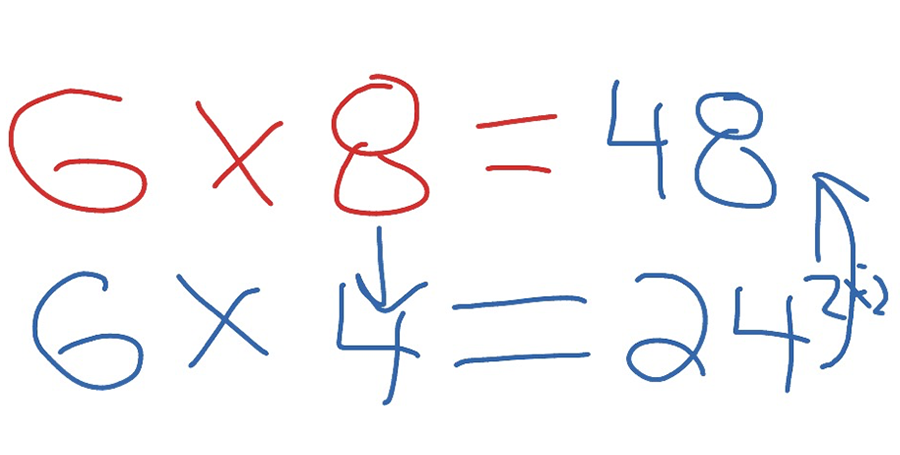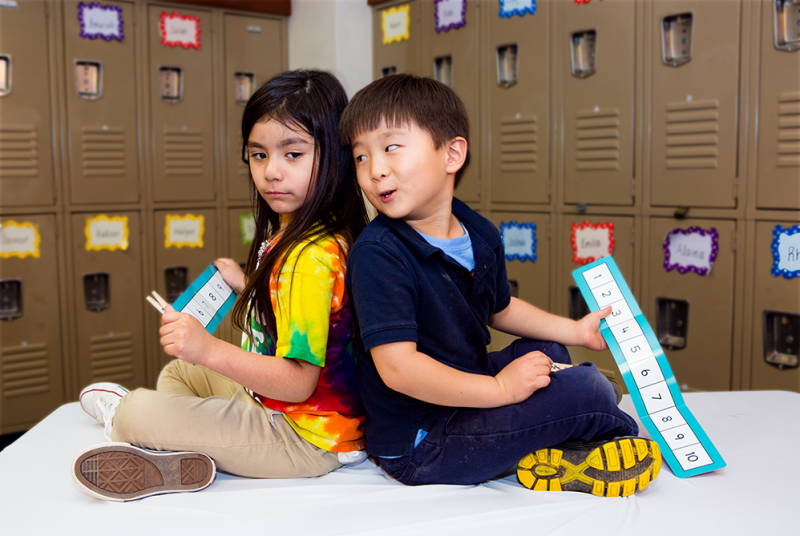Addition and Subtraction
Language in Mathematics: Borrowing from Literacy Strategies (Part 1)
Math Literacy Strategy Activity #1: Activating prior knowledge and using schema to make predictions
Over the years, elementary teachers in non-math subjects have made great use of research-based literacy strategies. These strategies increase reading comprehension by asking students to explore connections between what they’re reading and their previous experiences, background, or prior knowledge. The question for elementary math teachers is: can we apply these literacy strategies to math instruction? The good news is an emphatic “Yes.”
This is Part 1 of a 3-part series:
- Math and Literacy Part 1: Activating prior knowledge and using schema to make predictions
- Math and Literacy Part 2: Questioning as an Active Thinking Math Strategy
- Math and Literacy Part 3: Visualization and Modeling
Literacy in Math
In Mosaic of Thought (1997), reading education experts Ellin Oliver Keene and Susan Zimmerman identified three types of connections students use as they read:
- text to self
- text to world
- text to text
Let’s extend this to thinking about number or math concepts (operations, say):
- Number to self
- Number to world
- Number to number
Or, to use an addition example:
- Addition to self
- Addition to world
- Addition to addition
Activating prior knowledge is the first of three math literacy strategies we will explore in this series. This literacy strategy is key to helping students become metacognitive in mathematics. They will learn to “think about their thinking” as they are work with number, quantity, shape, time, data, length, and more in math class.
As students learn to make connections from their prior knowledge/experiences to the math concept at hand, they can scaffold upon that foundation and ultimately apply it to greater numbers, new facts, concepts, and ideas.
Model #1: Number to Self
In helping students make connections to their prior knowledge, a teacher should actively model “thinking aloud” to “number to self,” that is, they should prompt students to make connections to personal information.
For example, let’s consider 4 + 3. Your “think aloud” model might sound like this:
What is the total of 4 + 3?
“When I was your age, I loved to eat candy. I had four pieces of chocolate and my friend gave me her three pieces because she didn’t like chocolate. That meant that I had almost double the amount because a chocolate bar usually has eight pieces. She had three and I had three and one more. That meant I would have seven pieces which is one less than eight. So the answer to this question is seven.”

The next step is to have students share their own thinking and experiences with their peers. This is an important step toward the ultimate goal of having them work independently and applying their thinking to greater numbers.
Model #2: Number to World
The next modeling connection is what students know about number and the world around them. Again, the teacher should themselves model “number to world” for students:
What is the total of $43 + $34?
“This reminds me of when I had to buy a new pair of pants and shirt to go running. The pants cost one amount, which was a different amount from the shirt. I had to make sure I had enough money with me to afford both items. I remembered that four add three was seven. I could see from the prices that I needed seven ten-dollar bills and seven one-dollar bills. In total, I knew I needed seventy-seven dollars. Lucky for me I had eight ten-dollar bills.”

Students have many experiences with money, quantity, shapes, time, data, etc. from daily life. Teaching them to draw upon those experiences helps them to appreciate that mathematics is constantly around them.
Model #3: Number to Number
The last of the prior knowledge activation math literacy strategies we will look at is model connections that are “number to number.” This connection allows students to compare and relate numbers that look similar and transfer their understanding. For instance, let’s consider 4 + 3. Your “think aloud” model might sound like this:
What is the total of 4 + 3?
“Here’s what I know about four add three. First, I know that four is just one more than three in quantity. I also know that if I doubled three, the quantity would be six. If four is just one more than three, then one more than six is seven. So, four add three must be a total of seven. I would represent it like this: 4 + 3 = 7.”

Now, let’s look at some extended thinking to greater number and how it might sound when considering quantity and the mental math strategy of using a known fact:
What is the total of 40 + 30?
“I already know what 4 + 3 is. That’s easy; it’s seven. So, if I know that, then I know 40 + 30 is four tens and three tens. Together, that means we have seven tens.”
What is the total of .04 + .03?
“Since I know that adding four and three totals seven, I can use that information to help me add in the hundredths place. I can use the same thinking and know that the total is seven hundredths.”
In Part 2 of our Math Literacy series, our next blog explores questioning — another literacy strategy that has proved immensely beneficial to elementary math instruction. We will see how students develop and attempt to answer questions about the math concept at hand using words such as “where,” “why,” and “what if.” Ultimately, what’s most important is giving students a purpose for why they do math, how to actively think, and to encourage self-monitoring to enhance understanding.
Reference
1 Keene, Ellin Oliver and Susan Zimmerman. 2007. Mosaic of Thought – The Power of Comprehension Strategy Instruction. Heinemann.
2 Burnett, James. 2003. Mathementals. ORIGO Education.
About the Author
Brian De Moss is the Director of School Partnerships at ORIGO Education and works with some of the largest school districts seeking mathematics improvement (Fairfax County, Hawaii DOE, Fort Worth ISD, and Albuquerque) with the ORIGO Stepping Stones mathematics program. Brian has been involved in mathematics education for over 26 years. He started his career as a kindergarten teacher in Arizona after completing his BA in elementary education at the Center for Excellence at Northern Arizona University in 1992. Brian received his MS from Northern Arizona University in 1998 in Curriculum in Educational Leadership. In 1992, he accepted a position at the Bullhead City School District, Bullhead City, Arizona, where he has been involved in the teaching kindergarten through Grade 2. Brian was formally trained and certified as a multi-age teacher as well as a Project LIFE coach for Clark County School District. Brian is a passionate promoter of the concept of math as a social subject.
About ORIGO Education
ORIGO Education is dedicated to making learning mathematics meaningful, enjoyable and accessible for all, offering Pre-K through Grade 6 instructional materials, and professional learning.
![]()




